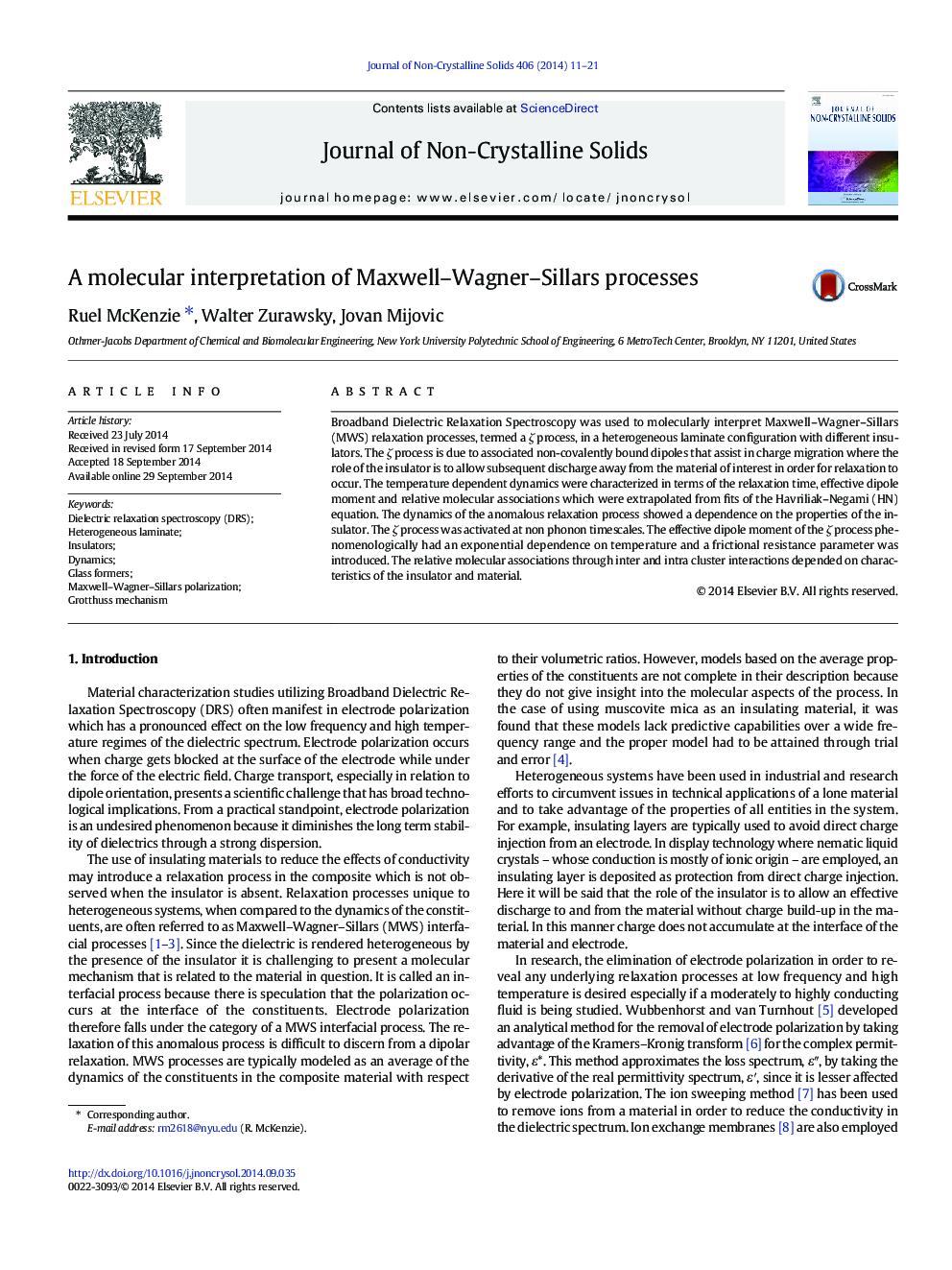| کد مقاله | کد نشریه | سال انتشار | مقاله انگلیسی | نسخه تمام متن |
|---|---|---|---|---|
| 1480926 | 1510436 | 2014 | 11 صفحه PDF | دانلود رایگان |

• Associated, non-covalently bound dipoles relax upon discharge which causes MWS process.
• MWS relaxation is activated at non-phonon timescales.
• Effective dipole moment has an exponential temperature dependence.
• MWS relaxation varies based on insulator properties.
Broadband Dielectric Relaxation Spectroscopy was used to molecularly interpret Maxwell–Wagner–Sillars (MWS) relaxation processes, termed a ζ process, in a heterogeneous laminate configuration with different insulators. The ζ process is due to associated non-covalently bound dipoles that assist in charge migration where the role of the insulator is to allow subsequent discharge away from the material of interest in order for relaxation to occur. The temperature dependent dynamics were characterized in terms of the relaxation time, effective dipole moment and relative molecular associations which were extrapolated from fits of the Havriliak–Negami (HN) equation. The dynamics of the anomalous relaxation process showed a dependence on the properties of the insulator. The ζ process was activated at non phonon timescales. The effective dipole moment of the ζ process phenomenologically had an exponential dependence on temperature and a frictional resistance parameter was introduced. The relative molecular associations through inter and intra cluster interactions depended on characteristics of the insulator and material.
Journal: Journal of Non-Crystalline Solids - Volume 406, 15 December 2014, Pages 11–21